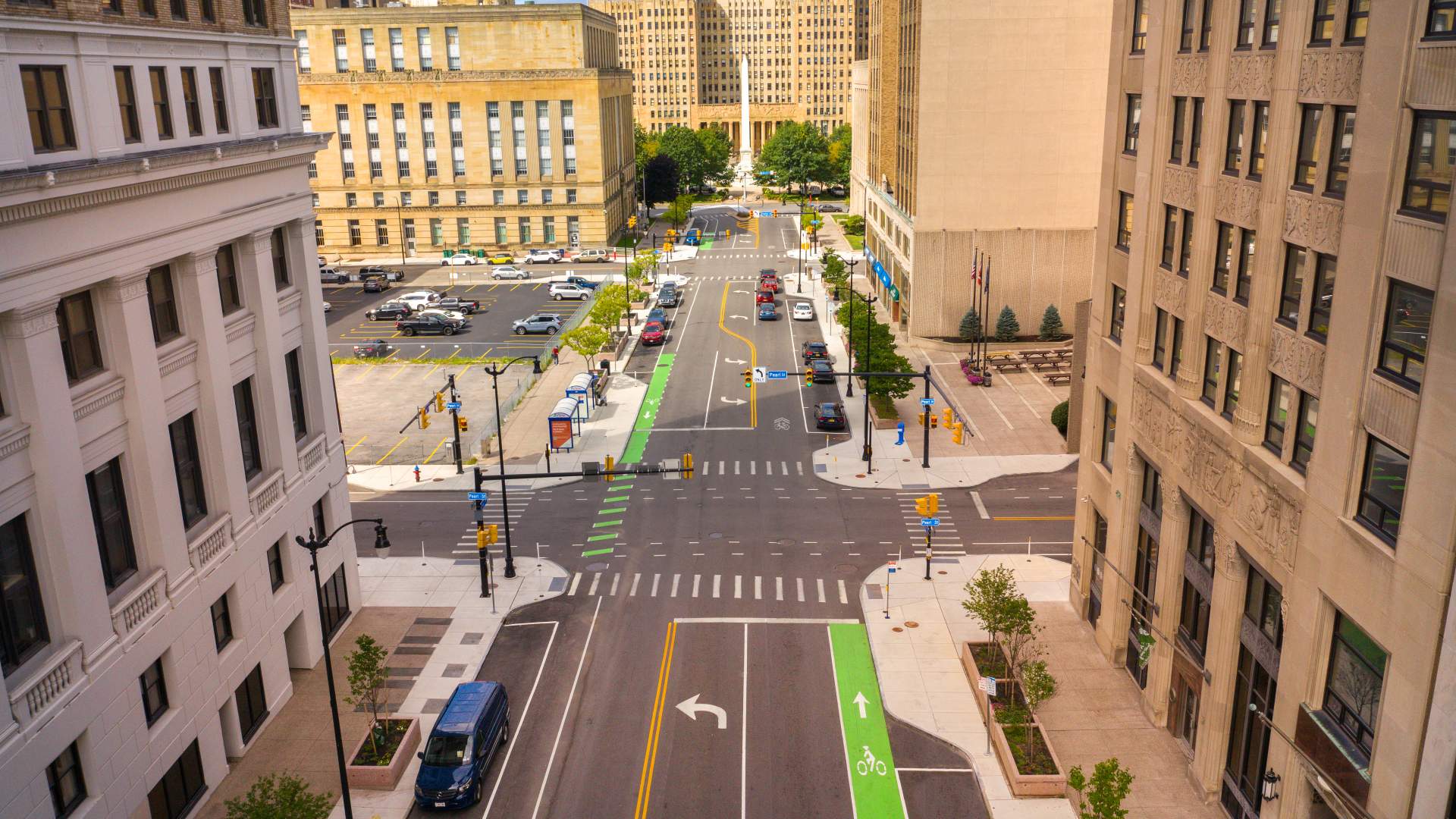Infrastructure Improvements to the Downtown Entertainment District
Buffalo, New York
This streetscape improvement project rehabilitated Court Street between Niagara Square and Main Street; Franklin Street from Court Street to Chippewa Street; and Chippewa Street between South Elmwood Avenue and Main Street in Buffalo, NY. These streets form the core of Buffalo’s Downtown Entertainment District – the Chippewa Strip, in the heart of the city, is a hub of bars, nightlife, dance clubs, restaurants and coffee shops. Franklin Street is anchored by the Buffalo Niagara Convention Center – the premier meeting and exhibit facility in Western New York. And Court Street is a bustling pedestrian corridor with major connections to transit and bus routes, Niagara Square, Lafayette Square, Main Street, City Hall, and other iconic architectural treasures.
The scope of our services included topographic surveying and mapping, scoping, preliminary design, and the preparation of the plans, specifications and cost estimate. The project was coordinated during design with the affected utility companies; involved agencies including the Buffalo Urban Development Corporation and the Niagara Frontier Transit Authority; interested stakeholders such as the Chippewa Alliance; and local business owners and real estate developers.
The proposed infrastructure improvements will follow the directives outlined in the Downtown Buffalo Infrastructure and Public Realm Master Plan. Design elements will echo features from other recent streetscape projects in the downtown district to create a cohesiveness amongst the City’s downtown streets, while also incorporating wayfinding elements and unique features, such as catenary lighting, which distinguish the corridor as the City’s downtown entertainment district.
The scope of construction work will include the following: pavement rehabilitation (consisting of a mill and inlay with spot full-depth repairs); new curb ramps at all intersections and spot curb replacement throughout; new sidewalk with special surface treatments; curb extensions and curb realignment; landscaping, tree plantings, wayfinding, street furnishings and amenities; high-visibility crosswalks and other pavement markings; traffic signs; a new street lighting system; and upgrades to the traffic-control signals. The project also involved sewer and water work; coordination with Buffalo Police to install security cameras; and the installation of public art.
Watts also monitored construction and administered the project during the construction phase.








